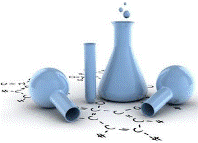Chemical and Biomolecular Engineering, Department of
Date of this Version
2020
Document Type
Article
Citation
Bioactive Materials 5 (2020) 949–962
https://doi.org/10.1016/j.bioactmat.2020.06.015
Abstract
Plasma fibrinogen (F1) and fibronectin (pFN) polymerize to form a fibrin clot that is both a hemostatic and provisional matrix for wound healing. About 90% of plasma F1 has a homodimeric pair of γ chains (γγF1), and 10% has a heterodimeric pair of γ and more acidic γ′ chains (γγ′F1). We have synthesized a novel fibrin matrix exclusively from a 1:1 (molar ratio) complex of γγ′F1 and pFN in the presence of highly active thrombin and recombinant Factor XIII (rFXIIIa). In this matrix, the fibrin nanofibers were decorated with pFN nanoclusters (termed γγ′F1:pFN fibrin). In contrast, fibrin made from 1:1 mixture of γγF1 and pFN formed a sporadic dis- tribution of “pFN droplets” (termed γγF1+pFN fibrin). The γγ′F1:pFN fibrin enhanced the adhesion of primary human umbilical vein endothelium cells (HUVECs) relative to the γγF1+FN fibrin. Three dimensional (3D) culturing showed that the γγ′F1:pFN complex fibrin matrix enhanced the proliferation of both HUVECs and primary human fibroblasts. HUVECs in the 3D γγ′F1:pFN fibrin exhibited a starkly enhanced vascular mor- phogenesis while an apoptotic growth profile was observed in the γγF1+pFN fibrin. Relative to γγF1+pFN fibrin, mouse dermal wounds that were sealed by γγ′F1:pFN fibrin exhibited accelerated and enhanced healing. This study suggests that a 3D pFN presentation on a fibrin matrix promotes wound healing.



Comments
2020 Production and hosting by Elsevier B.V.